
Space Tracking and Communications Center

Tsukuba Space Center's Oldest Department
Space Tracking and Communications Center Has Been Watching Space over the Past Half Century and Will Continue into the Future
The Space Tracking and Communications Center (STCC) represents one of the oldest departments of the Tsukuba Space Center, which was founded in 1972. From this center established, the STCC has been observing satellites and spacecraft 24 hours a day 365 days a year over the past half century. This article delivers the history of the department prepared based on the interview with its Director INOUE Koichi.
History of the STCC
The Martian Moons eXploration (MMX) Mission is the world's first mission to collect samples from the Martin moon, Phobos, and bring these back to Earth. Specifically, it is a mission to travel to the Martian sphere, observe the red planet's two moons (Phobos and Deimos), land on Phobos for sample collection, and return to Earth.
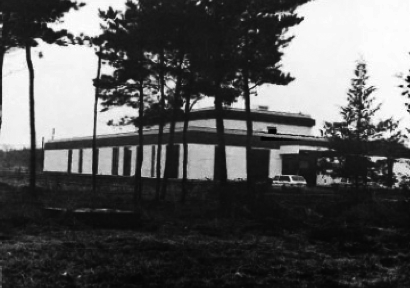
Tracking and Control Building (1975)
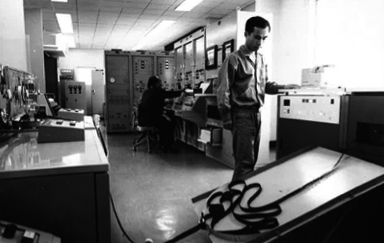
Katsuura Tracking and Communications Station (1973)
"In its earliest years, NASDA was staffed mostly by loaned or previous employees from electric and heavy manufacturers, communications companies, and government agencies. In 1988 when I entered the agency, the tracking and control-related department had a staff of about 200, of which the percentage of loaned employees had decreased to 25%. The department recruited personnel from various fields in those days before its recruitment planning came under the management of JAXA." (INOUE; same hereinafter)
At present, the STCC has a total of nine stations in Japan (15 parabolic antennas set up nationwide)―Tsukuba Space Center, Katsuura Tracking and Communications Station, Okinawa Tracking and Communications Station, Masuda Tracking and Communications Station, Usuda Deep Space Center, Uchinoura Space Center, Earth Observation Center (Hiki-gun, Saitama), Bisei Space Guard Center, and Kamisaibara Space Guard Center―and four overseas stations. When INOUE joined the department, only seven out of the above nine facilities had been completed―in Tsukuba, Okinawa, Katsuura, Masuda, Usuda, Uchinoura, and Earth Observation Center. At this stage, the fleet capacity of antennas fell short of requirement for independent operations for major missions, such as satellite launches, necessitating the lease of antennas from foreign space agencies, as INOUE described while looking back on the past.
Evolution of the Central Tracking Control Room, the core control function
"The Central Tracking Room (the "Control Room") was originally designed to have a theater-like structure with large monitors installed on the front wall and rows of wood-effect desks laid out on the tiered floor to face the front monitors. The staff worked in shifts around the clock in order to keep constant watch on space. The control desks were never left unattended even for a moment."
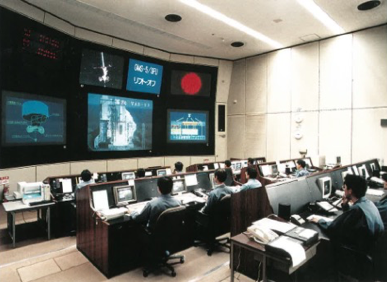
Central Tracking Control Room before renovation
INOUE continued, "Especially at the occasion of satellite launch, the Control Room was filled with a sense of extreme tension for a period of four or five days from the rocket launch to a proper orbital entry." In order to fulfill responsibilities for tracking the satellite, a staff of 100 were assigned to the special shift work, which suggests the significant importance placed on the tracking control function and the huge amount of workload entailed for this purpose in those days.
"Today, the Control Room is capable of collecting data from all the domestic and overseas stations and remotely controlling antennas in each station. On the earliest days, in order to perform "remote control," voice commands were sent out from the Control Room to each station for the local staff to perform necessary duties."
Subsequently, in addition to remote control, the Control Room's facility has been upgraded by implementing automation technologies, which has eliminated the need for JAXA to assign its personnel to the stations all the time.
Also, INOUE took note of change in the size of various equipment over time, remembering larger machines and devices used in the past.
"When I joined the department, a light car-size computing machinery was used for orbital mechanics calculation and "compact" size calculators, which were as large as a bookshelf, were working to run satellite control systems. The orbital mechanics calculator was too large to be housed in the Control Room and a dedicated room was built separately to accommodate the machine, with air-conditioning equipped to keep it from heating. Today, thanks to the recent development of downsizing technologies, all the applicable machines are housed within the Control Room. In addition, the spread of Internet technologies has driven the innovation of the means of communication, making some of the facility features unnecessary. As such, the Control Room has undergone a huge transformation."
The Control Room' structural specification has largely changed. The previous tiered floor has been replaced by the present flat structure, and the large front-wall monitors were removed. Instead, an array of desktop monitors has been installed to enable access to information on an individual basis.
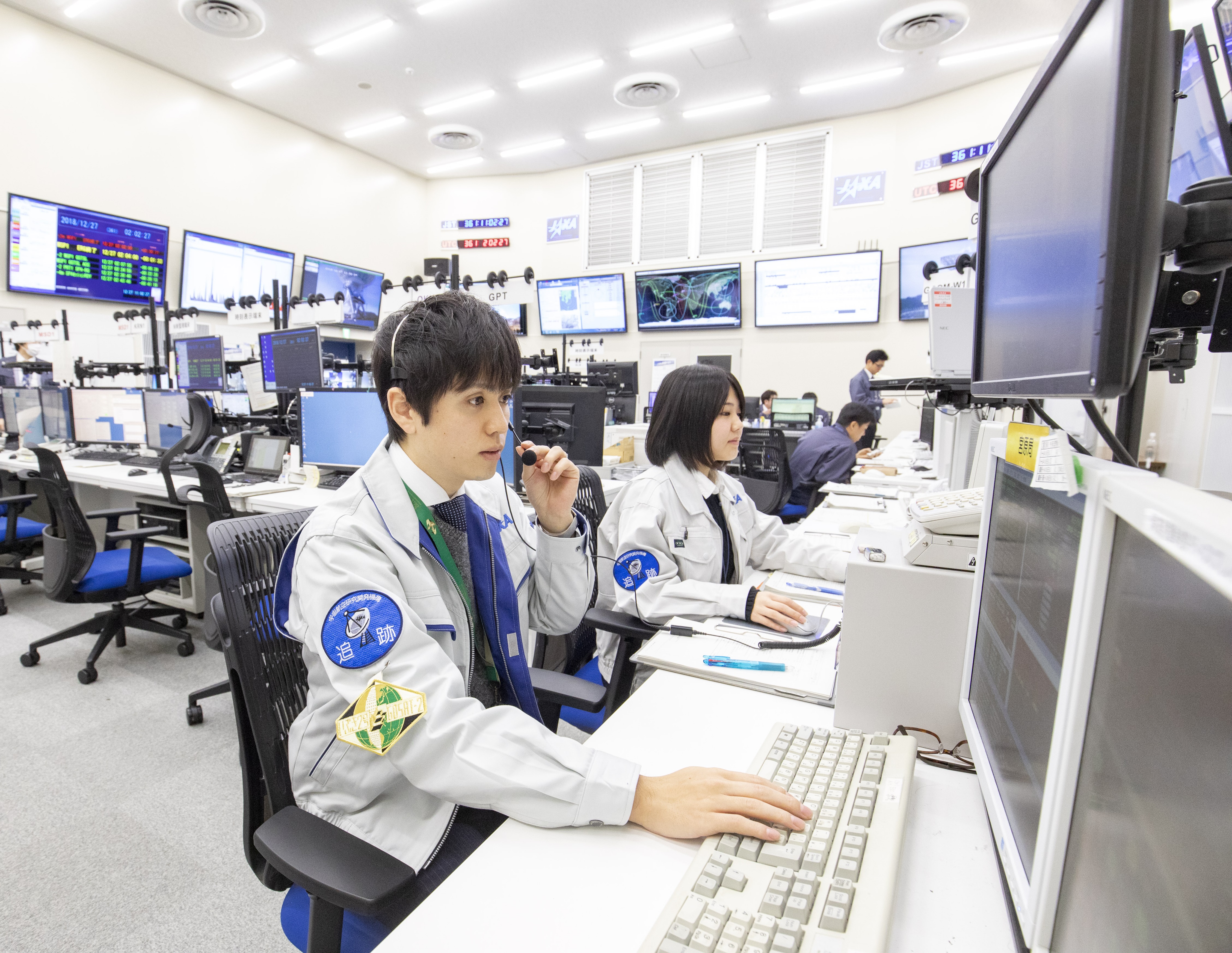
Connecting Earth and Space - Roles and commitment of the STCC
"While the STCC's facilities and specifications have been updated and upgraded in response to the different needs of the time, our missions basically do not change. The STCC's principal roles are the tracking and control of satellites and operation and maintenance of related equipment, for the purpose of connecting satellites in space and their users on Earth. We will continue to commit to these missions."
At the same time, INOUE talked about the operating structure being reorganized over these decades. Specifically, the initial structure was composed of four major operations for: 1. maintenance, use planning and operation of antennas; 2. satellite control; 3. orbit determination and orbit propagation (prediction); and 4. system development. Afterwards, operations for satellite control were transferred to departments managing individual satellites. And recently, the STCC has taken on a new role in observing space debris for the purpose of protecting satellites.
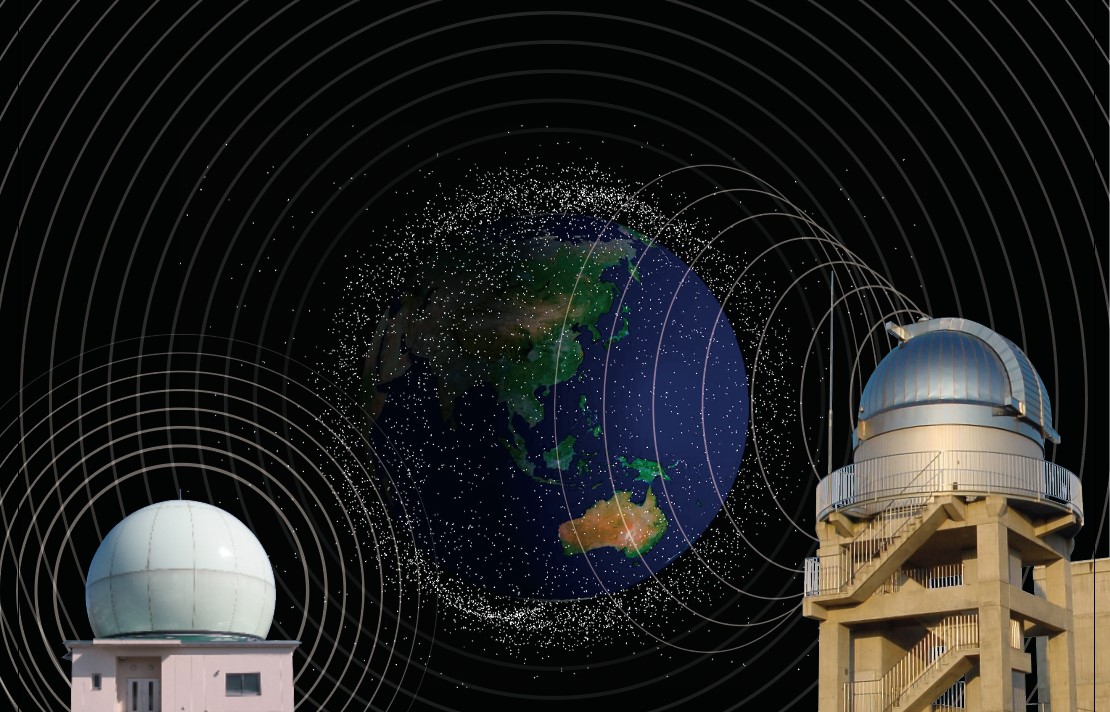
"We started to study about space debris during the last century before JAXA decided to carry out measures to address the issue this century as this topic began to receive wider attention. Our tasks are to track space debris to estimate its trajectory and control the satellite orbit to prevent the spacecraft from colliding with debris. In order to fulfill this new important role, we will demonstrate our strong capabilities for around-the-clock observation of space and satellites."
To wrap up the interview, INOUE shared with us his views on the motivation for working for the STCC, based on his experience of engaging in its operations in the past―more than 30 years ago―and at present.
"The STCC may be a relatively low-profile department. However, all its members are proud of striving to fulfill its role as an around-the-clock observer of satellites and spacecraft. They enjoy an appropriate sense of tension when undertaking each project, and feel a sense of pride in working behind the scenes to support individual missions."
Even today, INOUE, the STCC Director, occasionally misses the earlier days of engaging in on-site operations, saying, "I miss the days when I was working at the control desk. While looking at the computer screen, I felt a huge thrill out of imagining satellites orbiting in space and the control facility running in place, based on the data appearing on the screen."
The STCC, a function to connect space and Earth, continues to observe space around the clock in order to support the success of various space missions.
Profile

|
|
|---|
All the images are copyrighted ©JAXA unless otherwise noticed.
- Home>
- Global Activity>
- Public Relations>
- JAXA’s>
- JAXA's No.89>
- Space Tracking and Communications Center: Watching Space over the Past Half Century and Will Continue into the Future